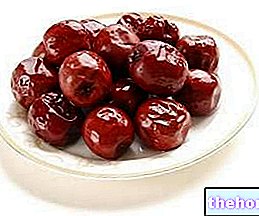Generality
The rum is a "brandy produced by distillation of fermented juice or sugar cane molasses (Saccharum officinalis).

Whatever its origin, it is not uncommon for rum to be flavored with herbs or other aromatic substances.
Due to its very high alcohol content, rum is classified among the spirits, which is why the methods of consumption and the relative precautions are the same as for grappa, gin, etc.
ATTENTION! The rum itself necessarily requires a period of aging in cask; if this step is not adopted, we speak of fantasy rum or artificial rum (which we will discuss later). Aged rum (also called ron añejo or rhum vieux) is clearly more valuable.
Commodity study
From a commercial point of view, rum is divided into many distinct varieties, based on the criterion of origin; the most important are: Jamaica Rum, Cuba Rum, Demerara Rum, St. Croix Rum, Martinique Rum, Guadeloupe Rum and Reunion Rum; a further criterion of distinction is constituted by the farm (holding) of origin. In addition, the various types of rum are differentiated according to the production method, that is: factory rum (fermentation of molasses and foams - it is the least valuable), industrial rum (fermentation of syrups and molasses - it is strongly aromatic and it is used for the production of fancy rums - see below) and country rums o Rhum d "Habitat or Agricultural rum (obtained from the distillation of cane sauce or vesou within agricultural distilleries - it is the most prized).
Young distilled rum is colorless, transparent, while with aging in cask it tends to pigment yellow. Sometimes, to simulate aging, young rum is painted with burnt / caramelized sugar (reddish-yellow or reddish connotation) .
In Europe, the most renowned qualities of rum are Jamaican; these drinks are colorless or slightly pigmented, while the others are strongly colored (especially the Demerara, a little less the Cuba and the Surinam). On the other hand, in the old continent the production of artificial rum or fantasy rum is quite established ( also sayings Facon rum), obtained by adding typical rum substances to the diluted and colored spirit.
Watch the video
- Watch the video on youtube
See other Cocktails based on Dark Rum or White Rum
Rum Babà Recipe Video
Chemical composition
Rum contains 70 to 77% by volume in alcohol; some are lighter, like those of French origin (50-65%), others are heavier, like Demerara (about 81%). The rums of Cuba and Jamaica are around 74 °, while those of Martinique (sayings Tafia) only 54 ° (at consumption, this last degree is sometimes moderate).
With the evaporation, a small residue of the rum remains, about 1%, composed of extractive substances and some sugars; there are traces of impurities (acids, aldehydes, ethers, higher alcohols) and the relative coefficient ( expressed in mg / 100ml of anhydrous alcohol) varies according to the origin.
Nutritional values (per 100 g of edible portion)

It is not uncommon for rum to be cut with common ethyl alcohol to increase (up to four times) its overall profitability, albeit at the expense of quality. If the pigment is excessively damaged by this addition, (as anticipated) we proceed with the addition of caramel.
In Europe, where good quantities of fancy or artificial rum are produced, the coloring also includes the use of catechu, oak extract and others. The essences and extracts of rum consist (similarly to cognac) of mixtures of ethers such as acid butyric, acetic and formic. The formulas for the preparation of these poor rums are numerous and below we will cite one as a generic indication:
"Acetic ether 20 parts, essence of vanilla 20 parts, essence of violets 20 parts, butyric ether 150 parts, spirit 900 parts".
Nutritional Characteristics
Rum is a distillate that is part of the whole of spirits. Its nutritional composition does not show any content in sugars, proteins and fats; it is therefore deductible that ALL the energy intake derives from the ethyl alcohol content.
Like limoncello, maraschino, grappa, gin, Marsala, nocino, Porto etc., even rum does NOT lend itself to frequent and / or systematic consumption.
Being a spirits, the average portion (however occasional) should be SIGNIFICANTLY lower than that of wine or beer; about 30-60ml.
The excessive consumption of rum is potentially harmful to the body, especially in the presence of overweight, hypertension, hypertriglyceridemia and liver pain.
Then, the abuse of spirits is closely related to the degeneration of the esophageal, gastric and duodenal mucosa, with the increase of acidity, reflux, the possibility of gastritis and, in the worst case, ulcer.
NB. The above nutritional table concerns a commercial rum, one of the least alcoholic and valuable.
Bibliography:
- New dictionary of commodity and applied chemistry. Volume 1 - V. Villavecchia - Hoepli - pag. 195.
Other Alcoholic Alchermes Alcohol test Alcopops Cocktail Alcoholic Alcoholic units calculation Cognac Gin Grappa Alcoholic degree Grappa Limoncino Maraschino Marsala Nocino Prosecco Rum Rum Sherry Sparkling wine Spirits Wine Port wine Vermouth Vodka Vov Whiskey Categories Alcoholic foods Meat Cereals and derivatives Sweeteners Sweets Offal Dried fruit Milk and derivatives Legumes Oils and fats Fish and fishery products Cold cuts Spices Vegetables Health recipes Appetizers Bread, Pizza and Brioche First courses Second courses Vegetables and salads Sweets and desserts Ice creams and sorbets Syrups, liqueurs and grappas Basic preparations ---- In the kitchen with Leftovers Carnival recipes Christmas recipes Light diet recipes Women's, mom's and dad's day recipes Functional recipes International recipes Easter recipes Celiac recipes Diabetic recipes Holiday recipes Valentine's Day recipes Vegetarian recipes Protein recipes Regional recipes Vegan recipes



























